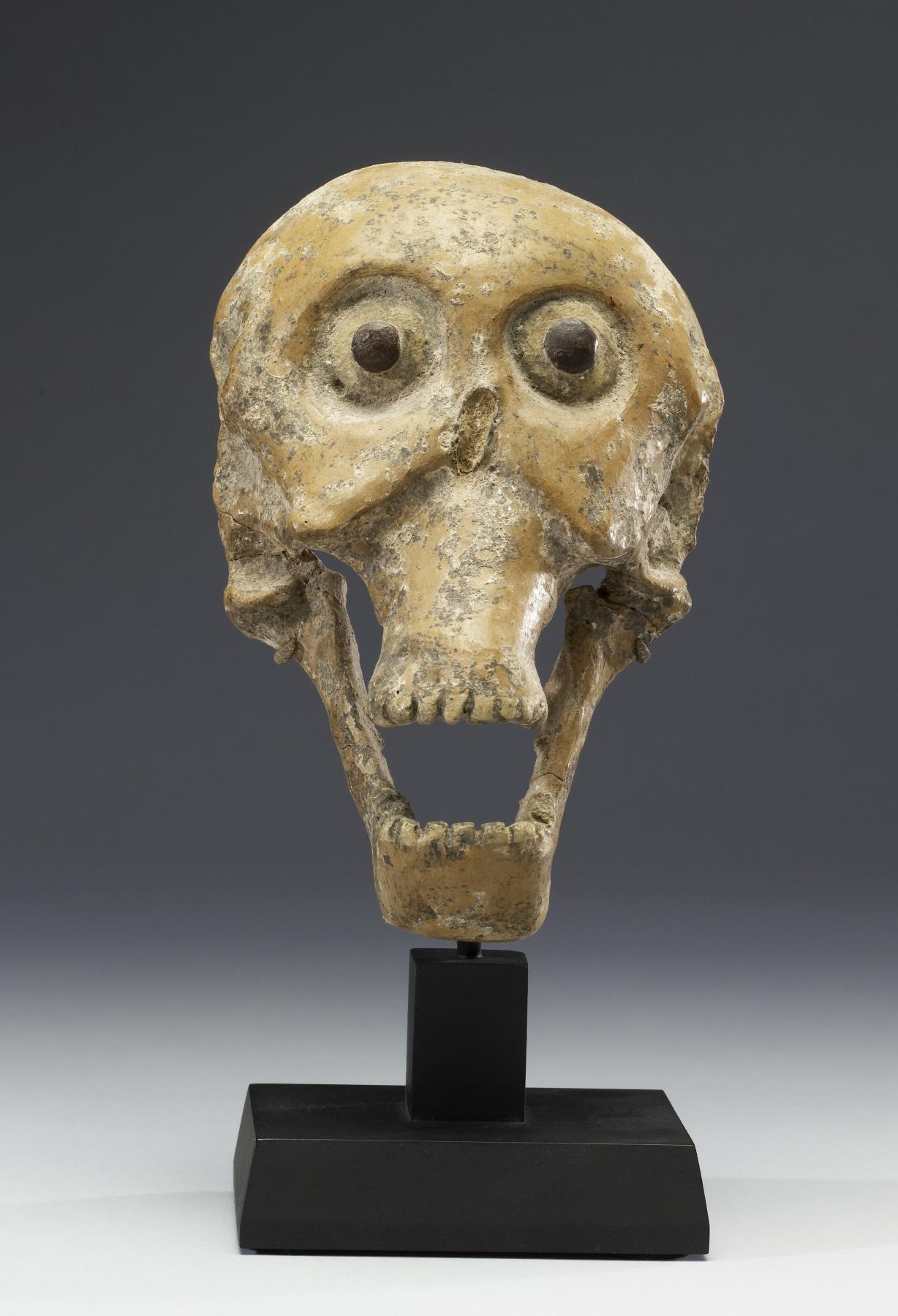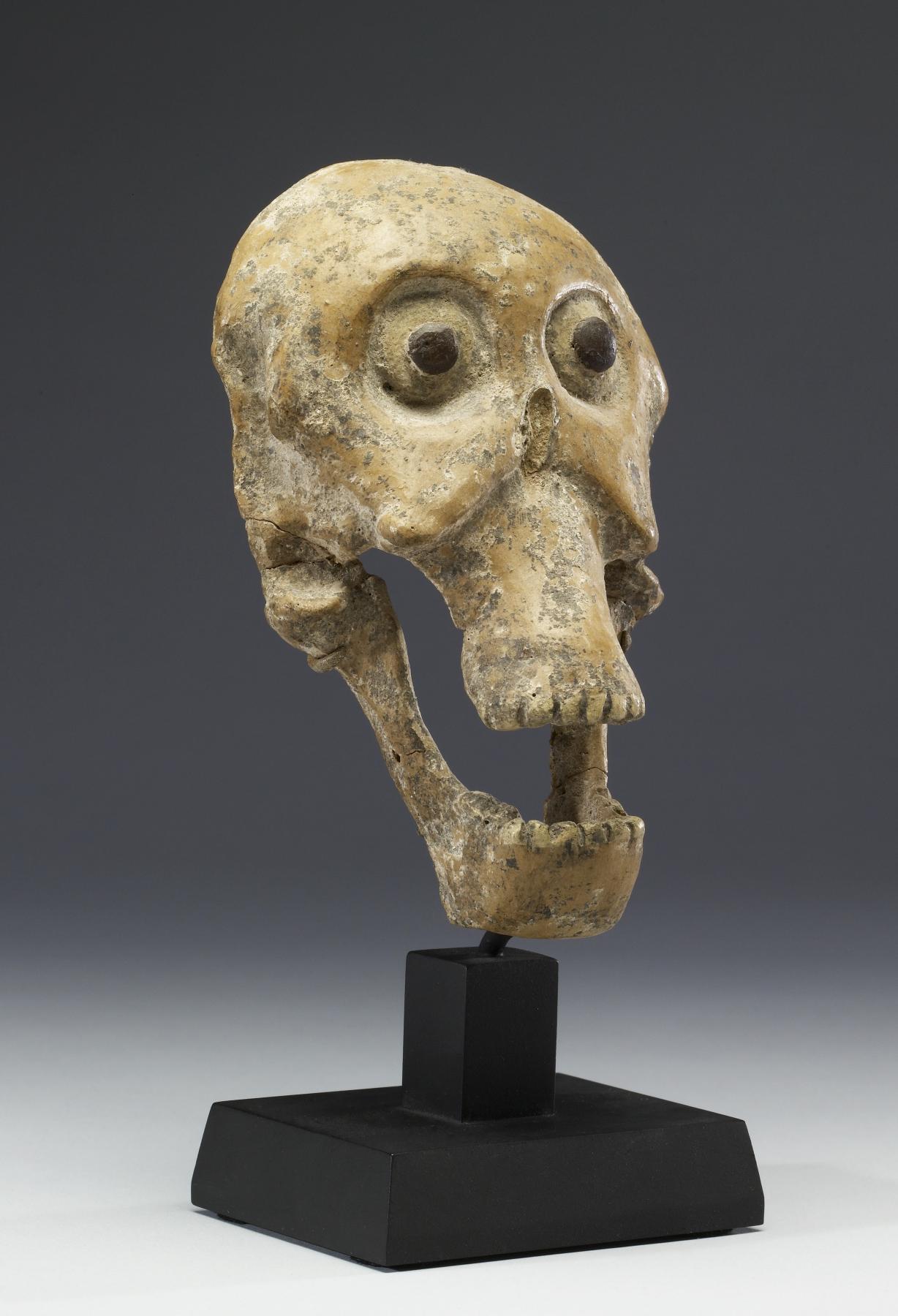Mask
(Ancient Americas )
Throughout Mesoamerica, the wearing of masks was central to the performance of religious rituals and reenactments of myths and history. The face is the center of identity, and by changing one's face, a person can transcend the bounds of self, social expectations, and even earthly limitations. In this transformed state, the human becomes the god, supernatural being or mythic hero portrayed. Masks of skeletal heads, whether human or animal, are relatively common, for death played a central role in Mexica religion. Death was one of the twenty daysigns of the Mexican calendar, indicating its essential place in the natural cycle of the cosmos. Death also was directly connected to the concept of regeneration and resurrection, which was a basic principle in Aztec religious philosophy. A key Mexica myth recounts the journey of Ehecatl, a wind god who was an aspect of Quetzalcóatl ("Feathered Serpent"), a powerful Mesoamerican deity. Ehecatl travels to Mictlán, the land of the dead, where he retrieves the bones of long-dead ancestors. He grinds their bones and mixes the powder with his blood, offered in sacrifice. With this potent mixture, the god formed the new race of humans who, according to Mexica cosmology, inhabit the present fifth age of Creation. Thus, death and rebirth are intimately connected in Aztec thought and religious practice. Both masks represent the concept of life generated from death with visages animated by lively eyes and painted skin. The mask was probably worn during rituals, covering the performer's face or attached to an elaborate, full-head mask, and transforms the person into a new being that symbolizes the pan-Mesoamerican belief in life springing from death as a natural, and inevitable, process of the mystical universe.
Provenance
Provenance (from the French provenir, 'to come from/forth') is the chronology of the ownership, custody, or location of a historical object. Learn more about provenance at the Walters.
Private collection, California; Ron Messick Fine Arts, Santa Fe, New Mexico; purchased by John G. Bourne, Sante Fe, 2000; given to John G. Bourne Foundation, 2000 [1]; given to Walters Art Museum, 2013.
[1] according to Bourne Foundation accounts
Geographies
Mexico (Place of Origin)
Measurements
H: 5 5/16 x W: 3 3/8 x D: 1 1/2 in. (13.46 x 8.64 x 3.81 cm)
Credit Line
Gift of John G. Bourne Foundation, 2013
Location in Museum
Not on view
Accession Number
In libraries, galleries, museums, and archives, an accession number is a unique identifier assigned to each object in the collection.
In libraries, galleries, museums, and archives, an accession number is a unique identifier assigned to each object in the collection.
2009.20.121






